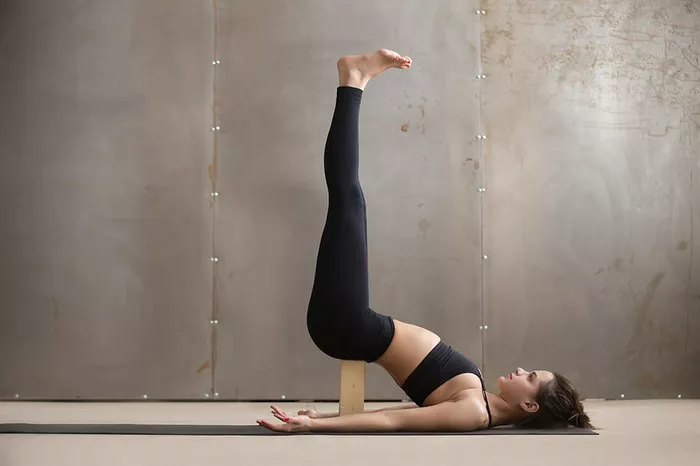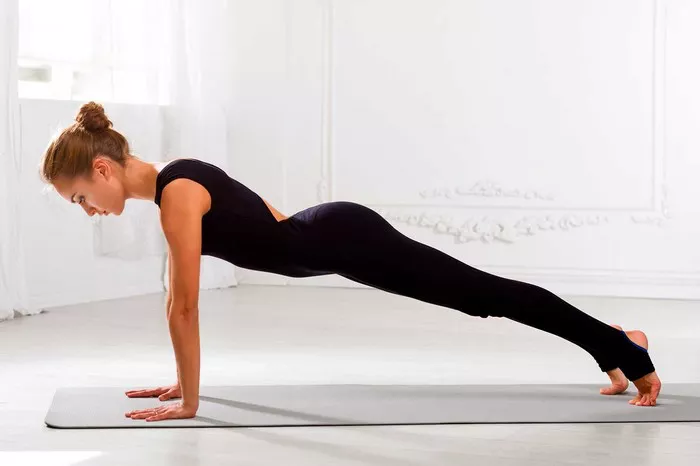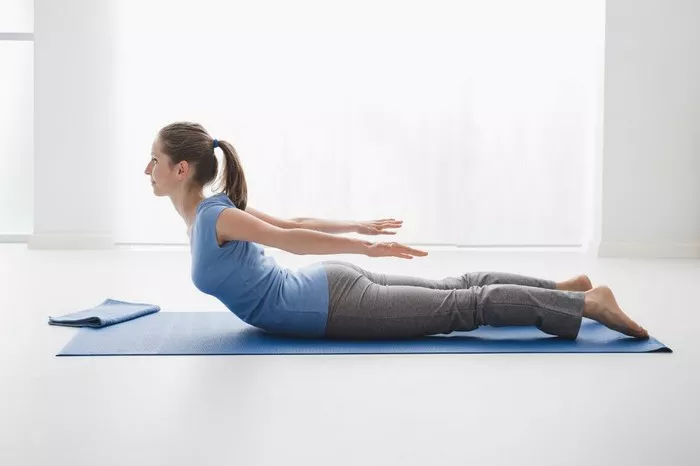Yoga, with its roots stretching back centuries, offers a profound journey towards holistic well-being. Among its myriad poses, the Waterfall Pose stands out as a symbol of tranquility and balance. In this article, we delve into the origins, symbolism, benefits, variations, step-by-step instructions, and precautions of the Waterfall Pose, providing a comprehensive understanding for practitioners at all levels.
Origins and Symbolism
The Waterfall Pose, also known as Viparita Karani in Sanskrit, has deep roots in ancient yogic traditions. Its name translates to “Inverted Action” or “Legs-Up-the-Wall Pose,” reflecting its fundamental posture. Historically, this pose was practiced to enhance physical and mental well-being, promoting relaxation and rejuvenation.
Symbolically, the Waterfall Pose represents surrender, letting go, and the flow of energy within the body. It embodies the concept of inversion, where the usual gravitational pull is reversed, allowing for a different perspective both physically and mentally. In yogic philosophy, inversions are believed to stimulate the Vishuddha chakra, associated with communication and self-expression, facilitating inner reflection and clarity.
Physical and Mental Benefits
The Waterfall Pose offers a plethora of benefits for both the body and mind, making it a valuable addition to any yoga practice:
1. Relieves Stress and Anxiety: By promoting relaxation and calming the nervous system, the Waterfall Pose helps alleviate stress and anxiety, fostering a sense of peace and well-being.
2. Improves Circulation: Inverting the legs allows for better circulation of blood and lymphatic fluid, reducing swelling and promoting detoxification.
3. Relieves Lower Back Pain: This pose gently stretches the hamstrings and releases tension in the lower back, providing relief from discomfort caused by prolonged sitting or standing.
4. Enhances Sleep Quality: Practicing the Waterfall Pose before bedtime can help induce a state of relaxation, leading to improved sleep quality and duration.
5. Alleviates Digestive Issues: The gentle compression on the abdomen in this pose can aid digestion and alleviate symptoms of bloating and constipation.
6. Boosts Mood: Inverting the body stimulates the release of endorphins, the body’s natural mood enhancers, promoting feelings of happiness and well-being.
Variations and Modifications
While the traditional Waterfall Pose involves lying on the back with legs extended vertically against a wall, there are several variations and modifications to accommodate different body types and levels of flexibility:
1. Supported Waterfall Pose: Place a bolster or folded blanket under the hips for added support, reducing strain on the lower back.
2. Legs-Elevated Waterfall Pose: Instead of resting the legs against a wall, elevate them on a sturdy surface such as a chair or yoga blocks, maintaining the inversion while providing more freedom of movement.
3. Wide-Legged Waterfall Pose: Open the legs into a wide V shape, allowing for a deeper stretch in the inner thighs and groin area.
4. One-Legged Waterfall Pose: Extend one leg up while keeping the other foot grounded on the floor, alternating between legs to balance the stretch evenly.
5. Dynamic Waterfall Pose: Add gentle movements such as bending and straightening the knees or rotating the ankles to enhance circulation and flexibility.
These variations cater to individual needs and preferences, making the Waterfall Pose accessible to practitioners of all levels.
Step-by-Step Instructions
Follow these step-by-step instructions to practice the Waterfall Pose safely and effectively:
1. Preparation: Find a quiet space with a clear wall and gather any props you may need, such as a bolster or blanket.
2. Setup: Sit sideways next to the wall with your knees bent and your hip touching the wall. Slowly lower your back to the floor while swinging your legs up against the wall.
3. Adjustment: Scoot closer to the wall until your hips and lower back are comfortably supported. You can place a folded blanket or bolster under your hips for added support.
4. Alignment: Ensure that your legs are straight and your feet are flexed, with your heels pressing against the wall. Keep your arms relaxed by your sides with palms facing up.
5. Breath Awareness: Close your eyes and focus on your breath, allowing it to deepen and become steady. Relax your facial muscles and soften your gaze.
6. Duration: Hold the pose for 5-15 minutes, breathing deeply and surrendering to the sensation of relaxation.
7. Release: To come out of the pose, bend your knees and roll onto your side, resting for a few breaths before slowly rising to a seated position.
Precautions and Contraindications
While the Waterfall Pose offers numerous benefits, it may not be suitable for everyone. It’s essential to approach this pose mindfully and heed any precautions or contraindications:
1. Pregnancy: Avoid practicing the Waterfall Pose if you are pregnant, especially in the later stages, as it may put pressure on the abdomen and affect blood circulation.
2. High Blood Pressure: Individuals with uncontrolled high blood pressure should avoid inversions or practice them under the guidance of a qualified yoga instructor, as they may exacerbate the condition.
3. Eye Conditions: If you have glaucoma or other eye conditions, avoid prolonged inversion poses to prevent an increase in intraocular pressure.
4. Neck or Spinal Injuries: Exercise caution if you have neck or spinal injuries, and avoid straining or forcing the posture. Consider consulting a healthcare professional before attempting this pose.
5. Menstruation: While some women find relief from menstrual discomfort through inversion poses, others may experience increased discomfort or heavy bleeding. Listen to your body and modify the pose as needed.
Before practicing the Waterfall Pose or any new yoga pose, it’s advisable to consult with a healthcare provider, especially if you have any pre-existing medical conditions or concerns.
Conclusion
In conclusion, the Waterfall Pose offers a gateway to profound relaxation and rejuvenation, encompassing physical, mental, and spiritual benefits. By honoring its origins, embracing its symbolism, and practicing with mindfulness and awareness, practitioners can tap into its transformative power, finding balance and serenity in body and mind. Whether you’re a seasoned yogi or a novice explorer, let the gentle flow of the Waterfall Pose guide you on your journey towards holistic well-being.
FAQs:
Who should not do legs up the wall?
Individuals with uncontrolled high blood pressure, glaucoma, neck or spinal injuries, or those in the later stages of pregnancy should avoid legs up the wall pose. It’s important to consult with a healthcare provider before attempting this pose, especially if you have any pre-existing medical conditions.
What is the healthiest yoga pose?
Determining the “healthiest” yoga pose can vary based on individual needs and goals. However, one widely recognized pose for its overall benefits is the downward-facing dog pose (Adho Mukha Svanasana). It strengthens the entire body, improves flexibility, relieves stress, and energizes the mind.
Does butterfly pose reduce belly fat?
While the butterfly pose (Baddha Konasana) can aid in stretching the inner thighs and groin area, it’s not specifically targeted for reducing belly fat. To reduce belly fat effectively, it’s important to maintain a balanced diet, engage in regular cardiovascular exercise, and incorporate strength-training exercises that target the core muscles.















